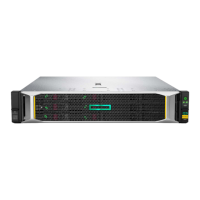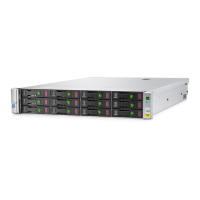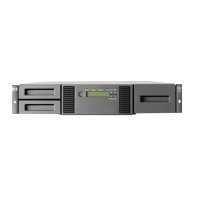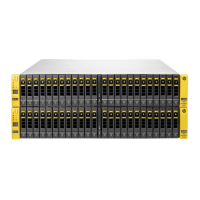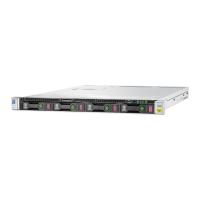7
Technical white paper | HP StoreVirtual 4000 Storage
Designing iSCSI solutions starts with ensuring resilient network communication and trac distribution. Storage nodes
are designed to address network fault tolerance and bandwidth aggregation by bonding network interfaces. Depending
on storage system hardware, network infrastructure design, and Ethernet switch capabilities, network interfaces can be
congured to support one of three bonded techniques. As changing the default speed, duplex, and ow control settings
of interfaces can only be performed on interfaces that are not bonded, these settings should be congured prior to
bonding network interface.
Network interfaces are bonded by joining two or more physical interfaces into a single logical interface (a so-called bond)
with one IP address. The logical interface utilizes two or more physical interfaces. A bond is primarily used to increase
fault tolerance at the network level, thus tolerating the failure of a network adapter, cable, switch port, and or a single
switch in some cases. Bandwidth aggregation is another reason to create bonds.
Bonds may be used for cluster and iSCSI connectivity, as well as management trac; for example, on HP StoreVirtual
4330 Storage with four 1GbE ports: Two interfaces in one bond for cluster/iSCSI communication and two interfaces for
CMC management operations on a dierent network segment.
Table 1 highlights the bonding techniques supported on HP StoreVirtual 4000 Storage.
Table 1. Bonding techniques supported by LeftHand OS
NIC bonding support Description Recommendation
Adaptive load balancing
(ALB)
Uses interfaces simultaneously for data transfer (receive and transmit load
balancing). If one connection fails, the remaining connection continues
without disruption to the storage nodes operation or iSCSI sessions. It oers
the benets of the increased transmission rates without additional switch
conguration. Interfaces in an ALB bond may be connected to dierent
switches and therefore supports switch failover.
Preferred
Active/Passive (A/P) Interfaces are bonded with one active (preferred) and the other passive
(standby). The preferred NIC is selected for the logical bond interface to use. If
the preferred NIC fails, then the logical interface begins using the standby NIC
in the bond until the preferred NIC resumes operation. When the preferred
NIC resumes operation, data transfer resumes on the preferred NIC. No
additional switch conguration is required to support this bonding method.
Simplest
Link aggregation (LACP;
IEEE 802.3ad)
Both interfaces are bonded into a link aggregation interface to deliver
both bandwidth aggregation and redundancy. The bonded interface
communicates to the network at the bandwidth of the sum of the interface.
If one NIC fails, the remaining connections continue with no disruption to
the iSCSI clients. To use link aggregation, the edge switch must support IEEE
802.3ad thus requiring switch conguration.
Most complex

